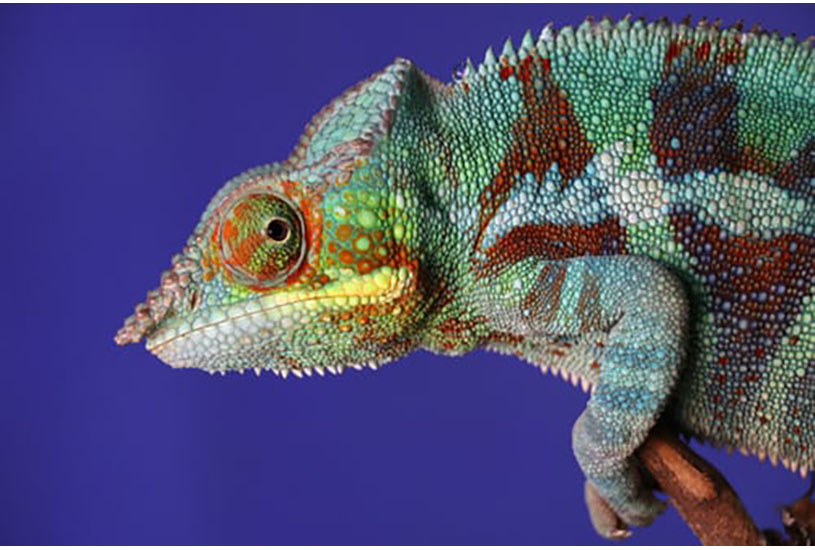To survive the modern business environment, we need to learn from our natural history.
The dinosaurs dominated Earth for more than 150 million years, and yet they still met their demise.
Palaeontologists continue to debate whether this K-T extinction event was the result of climate and geological changes that slowly brought about the extinction by interrupting the dinosaurs’ food supply, or a more sudden meteoric arrival from space.
Regardless of the cause, we recognise that dinosaurs are largely no longer with us because they were unable to adapt to their new conditions.
Skip forward a few million years, we still have so much to learn from our natural history, not least of which is how we can evolve our managerial capabilities to survive the dynamic, modern business environment.
Choose your adaptations
It should be noted that the K-T extinction was not the first massive die-off in history, nor was it the largest.
The Great Dying occurred more than 250 million years ago and eradicated 96% of all marine species and two-thirds of all terrestrial vertebrate species on Earth (The Guardian, 2018).
Similarly, the business conditions left behind from COVID-19 are not entirely ‘unprecedented’, nor is it likely to be the only or the last meteor business managers will face.
So, what will it take to develop, evolve and adapt our capabilities to survive and thrive in our new environment?
Unlike the dinosaurs, we as businesspeople can choose our adaptations. We can, for instance, be open to less rigid thinking.
We can choose to focus on some of our skills over others, to pivot our strategies and leverage our assets, in turn protecting ourselves from our own potential extinction event.
COVID-19 has all the hallmarks of a meteor for the business environment bringing about sudden change, but some crocodiles will also undoubtedly rise from the iridium cloud.
Evolve like a chameleon, disrupt like a beaver
Environmental change in a business context is a double-edged sword, presenting both opportunities and threats. For some firms, change presents the potential for growth and they flourish; but for others, evolution is tougher and they simply vanish.
Reflecting the regularity of change in the business context, the process of management evolution has long been studied.
Academicians suggest that managers and firms need to value dynamic capabilities which will protect them from risk and allow for the rapid behavioural evolution that is necessary in a modern environment.
The Dynamic Capabilities (DCs) view seeks to address how organisations can attain and maintain a competitive advantage when faced with environmental change (Teece et al., 1997).
Consistent with the dynamic capabilities approach – and the animalia theme of our discussion – it is argued that firms should implement two complementary strategies to achieve competitive advantage: the chameleon strategy and beaver strategy.
As the name suggests, following a chameleon strategy involves adapting to the environment. Firms evolve to suit changing conditions, matching their approach to the features of the environment.
This often requires the manager to predict how the climate might change and then reconfigure resources accordingly.
With this approach, a rapid pivot is necessary in order to reap the advantages of being the first to adapt to one’s surroundings (Eisenhardt & Martin, 2000).
Alternatively, the beaver strategy entails engaging in activities to create the competitive landscape in which the firm seeks to operate.
With this approach, firms perform a proactive role by creating their niches and changing the market structure to suit their own characteristics (Luksha, 2008).
Arguably, it follows that the beaver strategy may be more difficult to implement than the chameleon, as it requires a more fundamental shift in thinking for the manager.
But for some firms, changing the environment is a simpler proposition than adapting internal resources.
Surviving a dynamic environment
To gain a deeper understanding of the role of DCs in how firms survive and thrive in changing environments, we conducted research with senior managers with extensive experience working in a range of industries in Australia.
We undertook 12 in-depth interviews to guide the construction of a survey instrument, which was later administered to a further 270 Australian business managers.
We hypothesized that one of these two or a combination of both approaches might be more effective as a way of building dynamic capabilities under dynamic market conditions, such as those that we now encounter with COVID-19.
We concluded that in dynamic environments, firms should consider both the chameleon and beaver strategies.
A combination of adaptation to one’s surrounding (Chameleon strategy) and simultaneous construction of that environment (Beaver strategy) is likely to be more effective than simply preferencing one approach over the other.
Managers of firms are encouraged to invest in developing these DCs as a strategic, rather than a tactical approach.
This is because the outcomes of having DCs are not directly connected to short-term performance improvement and because the outcomes of implementing DCs can only be measured once they have occurred, rather than being predictable.
We suggest although operational marketing capabilities (e.g., pricing, marketing research, channel management, marketing implementation) are necessary, they are not sufficient for survival in the dynamic environment.
Certain DCs, such as having a proactive market orientation and value innovation are far more crucial to business success under these conditions.
To successfully survive and even thrive after COVID-19, business managers need to ensure they are not dinosaurs, rigid in their thinking and incapable of change.
We need to adapt and evolve like a chameleon, but also to find new food sources and modify our environment to suit our key assets like a beaver.
Failure to do so leaves us destined to suffer our own K-T-style extinction event.
Reza Kachouie is a lecturer at Deakin Business school, Department of Information Systems and Business Analytics (DISBA).
References:
- Teece, D. J., Pisano, G., & Shuen, A. (1997). Dynamic capabilities and strategic management. Strategic management journal, 18(7), 509-533.
- Eisenhardt, K. M., & Martin, J. A. (2000). Dynamic capabilities: what are they? Strategic management journal, 21(10-11), 1105-1121.
- Luksha, P. (2008). Niche construction: The process of opportunity creation in the environment. Strategic Entrepreneurship Journal, 2(4), 269-283.
- Kachouie, R., Mavondo, F., & Sands, S. (2018). Dynamic marketing capabilities view on creating market change. European Journal of Marketing, 52(5/6), 1007-1036.




